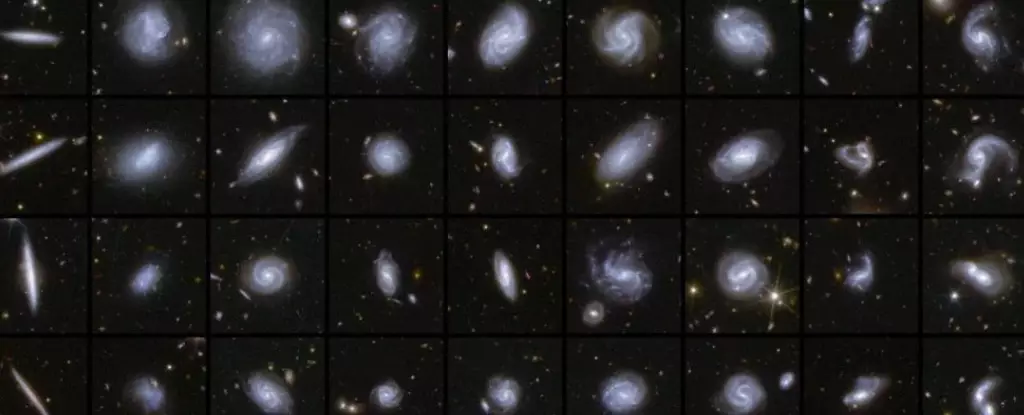The advent of space exploration has forever altered our understanding of the cosmos. One of the latest marvels in this ongoing quest for knowledge is the European Space Agency’s (ESA) Euclid Space Telescope. Launched in July 2023, Euclid has already begun to amaze astronomers and enthusiasts alike with its breathtaking images and invaluable data that promise to reshape our comprehension of the universe. With its grand mission to map the cosmos, Euclid stands as a beacon of hope in the mystery of dark matter and dark energy, aiming to answer some of the most profound questions in modern science.
First Look at Cosmic Splendor
The initial images released by Euclid are nothing short of spectacular. Capturing objects such as the Perseus Cluster and the Horsehead Nebula, the telescope’s 600 MB camera delivers insights into the beauty of celestial formations. However, these pictures are merely a precursor to the telescope’s true purpose: exploring the intricate history of the universe’s expansion. Euclid’s goal is expansive; it will analyze billions of galaxies spanning distances of up to 10 billion light-years while covering over one-third of the night sky. Such an ambitious endeavor promises to illuminate the large-scale structure of the universe, mapping it like never before.
Unlocking the Mysteries of Dark Matter
At the heart of Euclid’s mission lies its ability to dissect the entangled web of dark matter, which constitutes about 27% of the universe. Previous endeavors, like the Hubble Space Telescope, have shown us that studying deep fields—regions of the sky repeatedly imaged for extensive periods—can unveil incredible insights. Euclid aims to take these studies further, providing unparalleled views of the universe that will help unravel the distribution of both dark and ordinary matter. As the Director of Science at ESA, Prof. Carole Mundell stated, “Euclid shows itself once again to be the ultimate discovery machine.” This assertion speaks volumes about the telescope’s potential in advancing our grasp of cosmic phenomena.
Revolutionizing Data Collection and Analysis
Euclid employs sophisticated technology comprising two primary instruments: the visible light camera (VIS) and the near-infrared light camera (NISP). Together, these powerful tools enable Euclid to gauge the distances and masses of galaxies accurately, which is instrumental in charting the cosmic web’s framework. Clotilde Laigle, a scientist involved with the project, emphasizes the profound implications this data will have on understanding galaxy formation. As Euclid captures a staggering 26 million galaxies so far, we can only anticipate the wealth of information yet to come.
A Collaborative Approach to Discovery
The significance of the data released from Euclid cannot be overstated. The ESA’s partnership with artificial intelligence and dedicated citizen scientists allows for a multidimensional approach to uncover celestial phenomena. With the identification of around 500 strong gravitational lenses—many of which were previously unknown—Euclid showcases how this collaborative effort can enhance scientific exploration. As Pierre Ferruit, the mission manager, asserts, the integration of AI and citizen science with expert analysis creates a potent engine of discovery. This approach isn’t simply about accumulating data; it’s about transforming the way we engage with astronomical research.
Mirroring the Success of Gaia
Drawing parallels between Euclid and the ESA’s Gaia mission highlights the broader implications of such groundbreaking projects. Gaia has transformed our comprehension of the Milky Way by meticulously mapping over two billion stars, revealing insights into our galaxy’s structure and dynamics. In a similar manner, Euclid’s exhaustive survey of galaxies is poised to become foundational for advancing our understanding of the vast cosmos. With dark matter and dark energy being central to current astronomical debates, Euclid’s contributions are likely to play a pivotal role in resolving these pressing scientific challenges.
A Bright Future for Cosmic Exploration
As we look ahead to the future, Euclid’s mission stands as a testament to human curiosity and our intrinsic desire to explore the unknown. The first data released is just a glimpse of the monumental discoveries waiting on the horizon. As scientists sift through this treasure trove of information, we are reminded that the universe is a vast tapestry of wonders, each unveiling complex stories of formation, evolution, and interaction. Euclid’s mission will help thread together these intricate narratives, allowing us to forge new paths in astronomical science that can ultimately enrich our understanding of the universe and our place within it.
With its ambitious goals and revolutionary insights, Euclid will undoubtedly shape the future of astronomical research, opening doors we have yet to imagine. The brightest stars may indeed be within our reach, revealing the secrets of the cosmos one discovery at a time.

